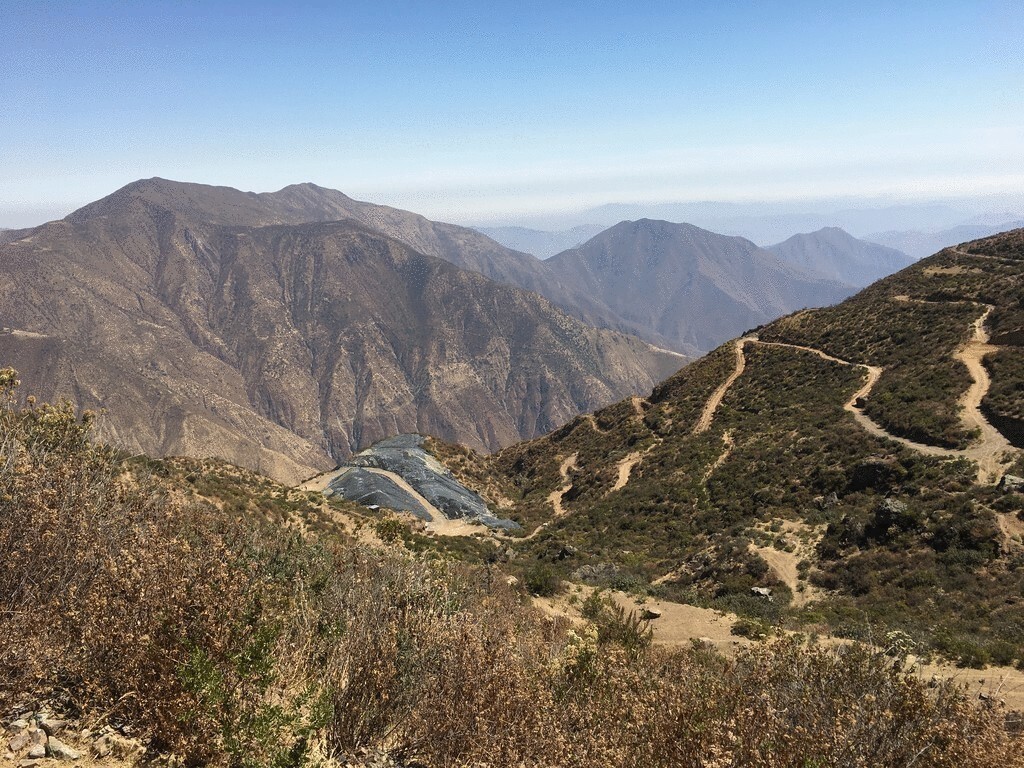Mount Polley disaster could have been a lot worse — report

An aerial view of the Mount Polley mine tailings pond shows the area where the dam wall gave way early on the morning of August 4. (Image from archives)
Two years after a dam containing a small lake of water and mine slurry at the Mount Polley copper mine near Likely, B.C. gave way, the tarnished Golden Triangle environmental and economic fallout continues.
The trees in the flood’s path weren’t the only things that got buried on August 4, 2014. Also covered by the flood was what was supposed to be a great B.C. mining success story, the Red Chris copper-gold mine – the first of a new generation of mines to be built in the so-called Golden Triangle of Northwest B.C. as a result of the construction of the $740 million Northwest Transmission Line and $700 million Forrest Kerr run-of-river power project built by AltaGas (TSX:ALA).
Both mines were built by Imperial Metals (TSX:III). The Red Chris success story got buried on the back pages, while Mount Polley generated front-page headlines.
The new $630 million Red Chris mine was just weeks away from commissioning when, on August 4, the Mount Polley tailings pond breached, erasing some of the good will the company had built with First Nations with Red Chris and casting a shadow over other mine projects planned for the Golden Triangle.
The immediate impact for Imperial Metals was a single-day 40% share price plunge, a $67.4 million cleanup bill and a delay in commissioning Red Chris. The company’s share price fell as low as $3.99, a 76% drop from August 1, 2014, when it was $16.80.
Imperial’s stock has recovered somewhat, but at press time it was still trading at roughly half of what it was immediately prior to the collapse.
This year, Imperial Metals reported revenue of $136.8 million for 2016’s first quarter from Red Chris and Mount Polley compared with $1.5 million in Q1 2015, when neither mine was producing.
One of Mount Polley’s impacts on B.C.’s mining sector is a new Ministry of Environment requirement that new projects going through an Environmental Assessment Office (EAO) review consider alternatives to water storage for tailings.
But two years on, the fallout continues, for Imperial, for the mining sector in general and for the provincial government.
On August 4, a handful of activists – the Secwepemc Women’s Warrior Society – marked the second year anniversary of the Mount Polley disaster by blockading the road to the mine. They followed that up on August 9 by occupying Imperial Metals head office in Vancouver, resulting in several arrests.
The Tsilhqot’in First Nation recently filed suit against Imperial Metals, two of its engineering firms and the B.C. government claiming that precautionary fisheries closures that resulted from the disaster breached their aboriginal rights to fish for food.
Imperial Metals is also still facing a class action lawsuit from some of its shareholders.
The Mount Polley disaster was not just a seismic event for Imperial Metals. It has had repercussions for B.C.’s entire mining sector, as other mines and the ministries responsible for their oversight came under increased scrutiny and new regulations.
It gave ammunition to Alaskans who had been raising concerns about another proposed mine in the Golden Triangle – the massive multibillion-dollar KSM copper-gold mine that Seabridge Gold Inc. (TSX:SEA) plans to build.
And the ministries of Environment and Energy and Mines were slammed earlier this year by the auditor general, who found a “culture” of non-enforcement within both ministries and inadequate staff levels.
One of Mount Polley’s impacts on B.C.’s mining sector is a new Ministry of Environment requirement that new projects going through an Environmental Assessment Office (EAO) review consider alternatives to water storage for tailings. In other words, they need to consider drystacking.
“All those projects that had one approach going forward, they needed to go back and provide that information to the EAO,” said Karina Brino, president of the Mining Association of BC. “It has taken us a while to get caught up with all the recommendations and the new requirements.”
One positive outcome from Mount Polley is that it shone a light on regulatory and enforcement shortcomings, but without catastrophic consequences.
Some mine tailings are more toxic than others. The chemistry of Mount Polley’s ore meant that the mine waste stored behind the Mount Polley dam was comparatively benign, so the impact on fish and other wildlife was minimal. Moreover, Imperial Metals did not go bankrupt as a result of the disaster.
“You didn’t have the giant acid mine drainage problem if, say, Gibraltar, dams like that, went,” said Calvin Sandborne, legal director for the Environmental Law Centre at the University of Victoria. “And you had a solvent company that had other operations that could subsidize this, like Red Chris.”
“Mount Polley has shed the light on a number of gaps in our system,” said Robyn Allan, an economist who was commissioned to write a report on Mount Polley for the Union of British Columbia Indian Chiefs. “There has been some positive outcomes because now we’re talking about these issues.”
But both Allan and Sandborne say government measures instituted to address the concerns over mine industry oversight and enforcement fall short of the mark when it comes to protecting the environment and taxpayers.
Auditor General Carol Bellringer also highlighted what she found to be serious shortcomings in the ministries of Environment and Energy and Mines when it comes to oversight and enforcement in an audit released in May.
“Almost all of our expectations for a robust compliance and enforcement program were not met,” she concluded. “The compliance and enforcement activities of both the Ministry of Energy and Mines, and the Ministry of Environment are not set up to protect the province from environmental risks.”
Also see, Lawsuit of the Week: Flood of Lawsuits hits Imperial Metals.
{{ commodity.name }}
{{ post.title }}
{{ post.date }}

Comments